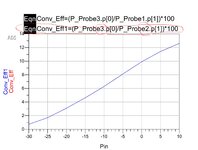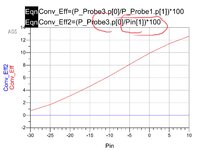19127916
Newbie level 4
Hi,
I have designed a voltage doubler rectifier matched at 1.75 GHz.
My problem is with HB simulation. I cannot understand what is the problem with my design that Pin and Pout are about zero and conversion efficiency vs Pin is negative nd zero.
I would be thankful if someone can help me to find the problem.



Thanks
I have designed a voltage doubler rectifier matched at 1.75 GHz.
My problem is with HB simulation. I cannot understand what is the problem with my design that Pin and Pout are about zero and conversion efficiency vs Pin is negative nd zero.
I would be thankful if someone can help me to find the problem.
Thanks

